ODA Members
The Oregon Dental Association represents about 1 out of 2 dentists across the state. ODA members are diverse in their practice settings, patients they treat, education backgrounds, personal histories, and accomplishments. Dentists are an integral part of their local communities, committed to improving the oral health of their neighbors. We are honored to highlight some of our members' stories here.
ODA 2020 Impact Report
At the heart of dentistry is a desire to serve and care for people. Thank you to all the dentists who shared their stories in the 2020 ODA Impact Report, and to the countless others who spend every day taking care of Oregonians’ oral health. Together we’re making a difference in providing equitable, quality dental care to everyone in Oregon. Download the full report now!
ODA Member Highlights
Dr Travis Davis: Tooth Taxi answers the call for rural dental care
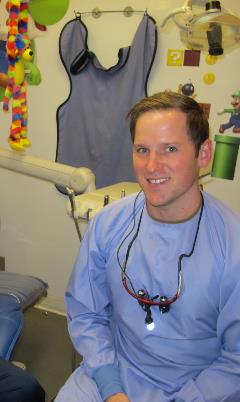 As a native Oregonian from Molalla, Dr. Travis Davis understands the challenges that come with finding oral health care in rural spaces – whether because of distance, availability of specialists or affordability and access to insurance coverage. As a dentist for the Tooth Taxi, Dr. Davis is happy to help address these challenges and bring smiles to children in all corners of the state.
As a native Oregonian from Molalla, Dr. Travis Davis understands the challenges that come with finding oral health care in rural spaces – whether because of distance, availability of specialists or affordability and access to insurance coverage. As a dentist for the Tooth Taxi, Dr. Davis is happy to help address these challenges and bring smiles to children in all corners of the state.
Through the Tooth Taxi program, Dr. Davis travels to different Oregon schools each week, providing free dental checkups and treatment options to children who need it most.
The Tooth Taxi is funded by the Oregon Dental Association's charitable arm, the Dental Foundation of Oregon as well as a long-term partnership with Delta Dental of Oregon and the OEA choice Trust. Through the Dental Foundation of Oregon, dentists have supported programs in public schools and provided charitable care for 40 years. The Tooth Taxi has been on the road for 11 of those years and has treated more than 20,000 students, providing over $7 million in free dental care.
Growing up, Dr. Davis was served by public health plans himself. After graduating from OHSU's School of Dentistry in 2017, he worked at a clinic in Yakima, Wash., where he treated many children as well as adults on state insurance plans.
Through his work with the Tooth Taxi, he typically screens more than 60 students in a single day and provides treatment for painful, sometimes dangerous, oral infections. His care also goes beyond the dental chair and into the classroom, providing oral health education and tooth care tips to students of all ages.
"It's shocking how few providers there are in some areas," said Dr. Davis, who now lives in Canby. "I think it's important to get out there and help them recognize the services they are entitled to so they can start being seen more regularly if possible."
The program spends a week at each school providing care and education to all children who sign up. In particularly remote locations, the taxi will sometimes spend up to two weeks on site. According to Dr. Davis, no location is too remote – if a school in Oregon calls for dental care, the Tooth Taxi will answer.
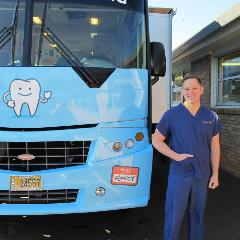
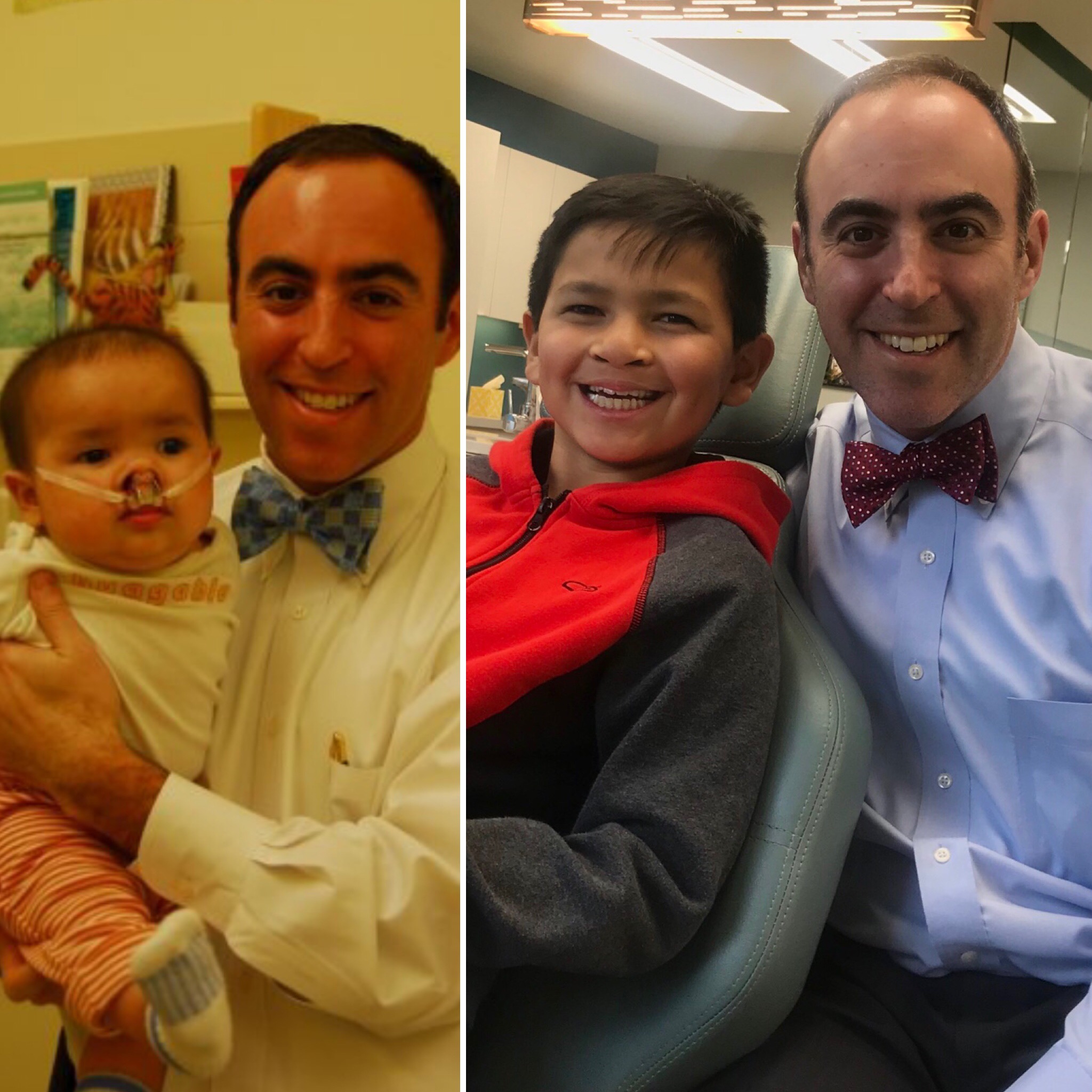
Dr. Judah Garfinkle: Rebuilding Smiles in our own Backyard
Growing up around his orthodontist father and oral surgeon grandfather, Dr. Judah Garfinkle never thought much about joining the family industry. He had many career interests growing up and while at college at the University of Oregon, but finally came to dentistry on his own after wanting to focus on helping others and working his hands.
While in dental school at the Harvard School of Dental Medicine, he attended a mission trip to Bolivia with Operation Smile, a nonprofit organization that that helps treat children in other countries affected by cleft lip and palate. Through this trip, he was part of a team that delivered over a hundred surgeries in just a few days. He was able to make oral appliances and partial dentures for people who would never otherwise have received the care. He was able to lead the student team on visits to orphanages and schools, teaching the children about oral hygiene and other basic health care needs, all the while learning from experts in craniofacial care.
While many aspects of dentistry attracted Dr. Garfinkle, the desire to have long term relationships with his patients and the option of working with children led him to orthodontics. During his orthodontic training at the University of Kentucky, Dr. Garfinkle was drawn to treating patients with cleft lip and palate and other craniofacial conditions. And while he gained some experience during his residency, he had learned enough to know he needed further training to really be able to help patients affected by cleft and other craniofacial conditions.
Following his orthodontic residency, Dr. Garfinkle was accepted to the Craniofacial and Special Care Orthodontic Fellowship at the Institute of Reconstructive Plastic Surgery at New York University. He learned about all types of clefts, other craniofacial conditions, and various complicated cases, how to diagnose and manage them, and learned how to work as part of the interdisciplinary team. His fellowship exposed him to both the treatment and emotional needs of the patients and families as the process often extended from birth into adulthood.
"During my fellowship, I received a piece of advice from one of my professors," said Dr. Garfinkle. "He told me, ‘You've got to take all comers, not just those who can afford it."
Dr. Garfinkle took his professor's advice and his newfound expertise in craniofacial orthodontics and returned home to Oregon where he accepted a position as the Director of Craniofacial Orthodontics at OHSU's Doernbecher Children's Hospital and began working with his father in his orthodontic practice in Portland.
In 2008, Dr. Garfinkle used his expertise to found Smile Oregon, a nonprofit organization dedicated to ensuring that every family affected by a cleft or craniofacial condition living in Oregon has access to the coordinated care they deserve by providing support, awareness and education.
"Most people associate the need for the work we do with other countries, but children are born with cleft and craniofacial conditions right here in our backyard, and struggle to receive the care they need," said Dr. Garfinkle. "It's a disservice to think that it only happens in other countries or that a one-and-done treatment is all that is necessary to fix a cleft. The good news is that we know what to do, how to do it, and when to do it, and we can pretty much erase a cleft before the child is off to college. But it takes 20 years and costs over a $120,000. And even with insurance, it is common for up to $20,000 of the care to not be covered."
Smile Oregon provides support for any indicated procedure from birth through adulthood. They also focus on community support for the patients they serve. This year, Smile Oregon is hosting a teen event for the first time, and some of the families have been a part of Smile Oregon for over 10 years now.
"There are not too many positive things about getting older, but one is getting to be on this amazing journey with these children and their families. It makes all my work worth it. I met a lot of these kids when they were one to two weeks old and now a lot of them are old enough to go bowling and hang out. It's a great thing to see," said Dr. Garfinkle. "We're also starting parent programs. The parents of the older children are experienced in how to deal with these conditions and looking to help families just starting out. These programs give the parents an opportunity to pay it forward to other parents who are just now beginning their journeys."
While many organizations operating primarily overseas are unable to provide care other than the primary surgical correction for these types of conditions, Smile Oregon is focused on ensuring all aspects of patient care are supported from birth to adulthood including specialized baby bottles, speech therapy, final restorative dental work and everything in between.
As the co-founder and Board President of Smile Oregon, Dr. Garfinkle has led his working board for over 10 years, fulfilling the day-to-day work of the organization to provide personalized service to each family regardless of their ability to pay. Recently, the organization hired their first team member, which has allowed them to expand their reach.
Dr. Garfinkle's vision, whether working at Doernbecher, at his private orthodontic practice or with Smile Oregon, is to "craft smiles that elevate the spirit."
"We have such a wonderful dental community in Oregon," said Dr. Garfinkle. "Being able to make a difference to our patients by lifting their spirits helps give all of us a sense of purpose and satisfaction in our own lives."
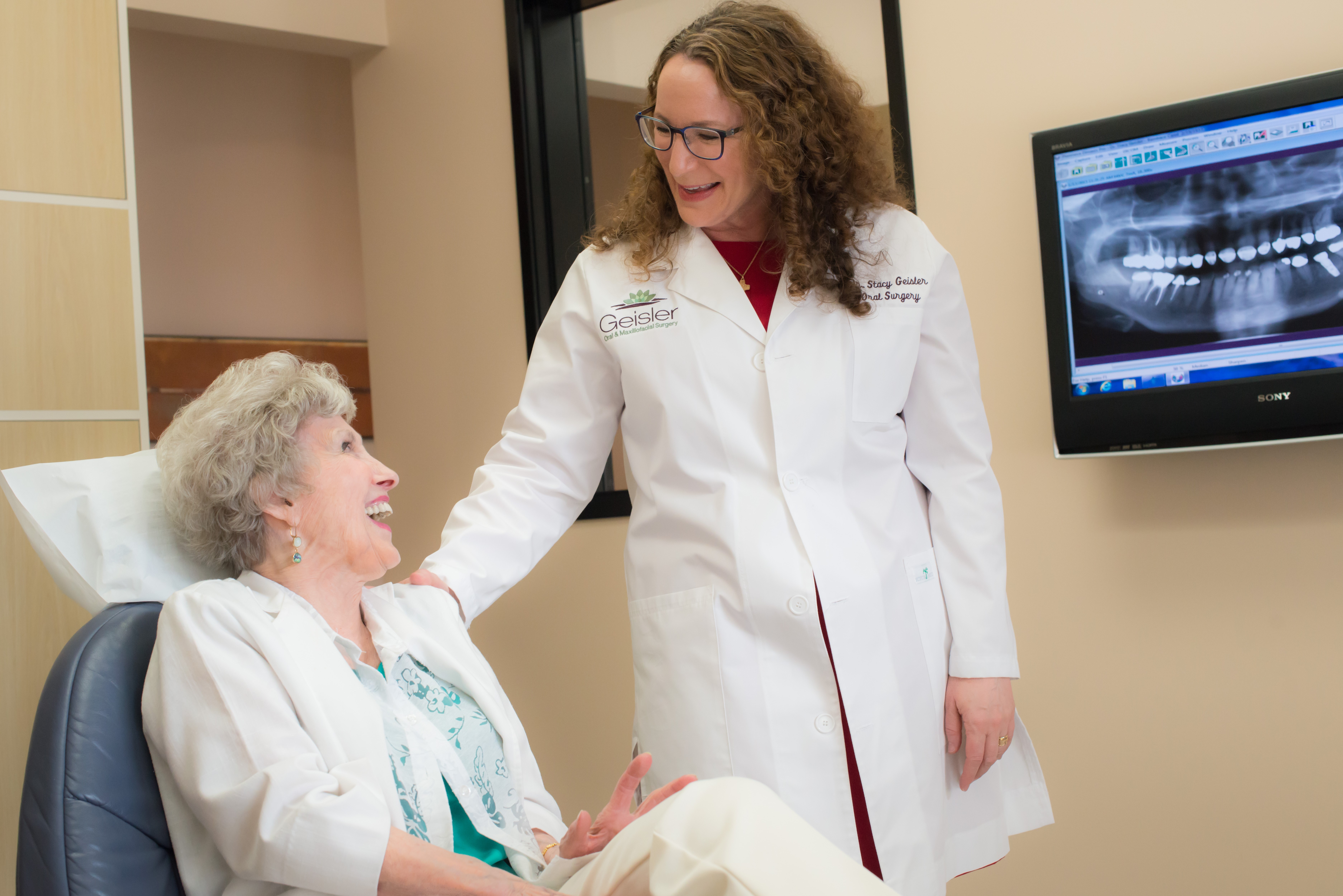
Dr. Stacy Geisler: Oregon's First Female Oral and Maxillofacial Surgeon
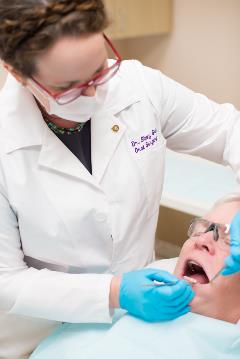 When Dr. Stacy Geisler first moved to Oregon and contacted the Oregon Board of Dentistry about becoming licensed to practice here, she learned that she would become the first female, board certified oral and maxillofacial surgeon in the history of the state.
When Dr. Stacy Geisler first moved to Oregon and contacted the Oregon Board of Dentistry about becoming licensed to practice here, she learned that she would become the first female, board certified oral and maxillofacial surgeon in the history of the state.
"When I first heard that, my heart sank. I was surprised and shocked that I was the only one," said Dr. Geisler. "But since then, there have been more of us who have either come to Oregon or received our training here."
Dr. Geisler earned her undergraduate at the University of California, Davis, where she put herself through school working as a firefighter for the California Department of Forestry. She received her DDS from Case Western Reserve University and her PhD in epidemiology from the University of North Carolina (UNC) at Chapel Hill, completed her residency in oral and maxillofacial surgery at the University of Texas and completed a National Institute of Health (NIH) post-doctoral fellowship at UNC Chapel Hill.
"I was one of the first women in my program in Texas and it certainly had its challenges," said Dr. Geisler. "I completed my surgical training prior to mandatory time off for residents. One quarter I took call every third night for several of the trauma hospitals. I had extremely long work hours. I was tired but this type of training produced strengths. Everyone in our program – men and women – had to develop resiliency and compassion toward other people. No one really wants to suffer, but if you can survive those challenges, you truly have compassion for other people and you can work toward change."
When Dr. Geisler entered the workforce in the early 1990s, less than one percent of board-certified oral and maxillofacial surgeons were female. Today, that number is closer to seven percent.
While she may have faced additional challenges throughout her career, Dr. Geisler loves her work and the patients she gets to work with.
"I get to work with a lot of children and adults who have complex needs and medical histories, including children who have really significant cardiac issues," said Dr. Geisler. "I also care for a whole group of people who can't receive treatment in a normal dental outpatient setting, which requires a lot more coordination of care with cardiologists and physicians."
Dr. Geisler's advanced degrees and training allows her to bridge the gap between medical and dental to provide the best care possible for her patients. To that end, the research she completed with the NIH focused on identifying survival predictors of head and neck cancer patients based on genetic and tumor DNA. That research still holds up today.
But with all of her accolades, Dr. Geisler says one of her favorite aspects of working in oral and maxillofacial surgery is getting to care for patients who may have fears or misperceptions about the dentist or the work she does.
"People are really frightened when they come to see us. Especially with many of the kids I work with – there's a lot of challenges with handling the patient and earning their trust," said Dr. Geisler. "So, it's really encouraging when you help them and they're no longer afraid of the dentist or the oral surgeon."
A pioneer in her field, Dr. Geisler believes that it's up to the dentists working in the field today to improve patient care and access in all fields of dentistry, which is why she is involved with the ODA's legislative committee and works with multiple nonprofits serving children.
"I truly love what I do," said Dr. Geisler. "Dentistry is such a great profession. Through organizations like the ODA, we have a seat at the table and so it's up to us to come up with creative solutions to improve and expand access to care."
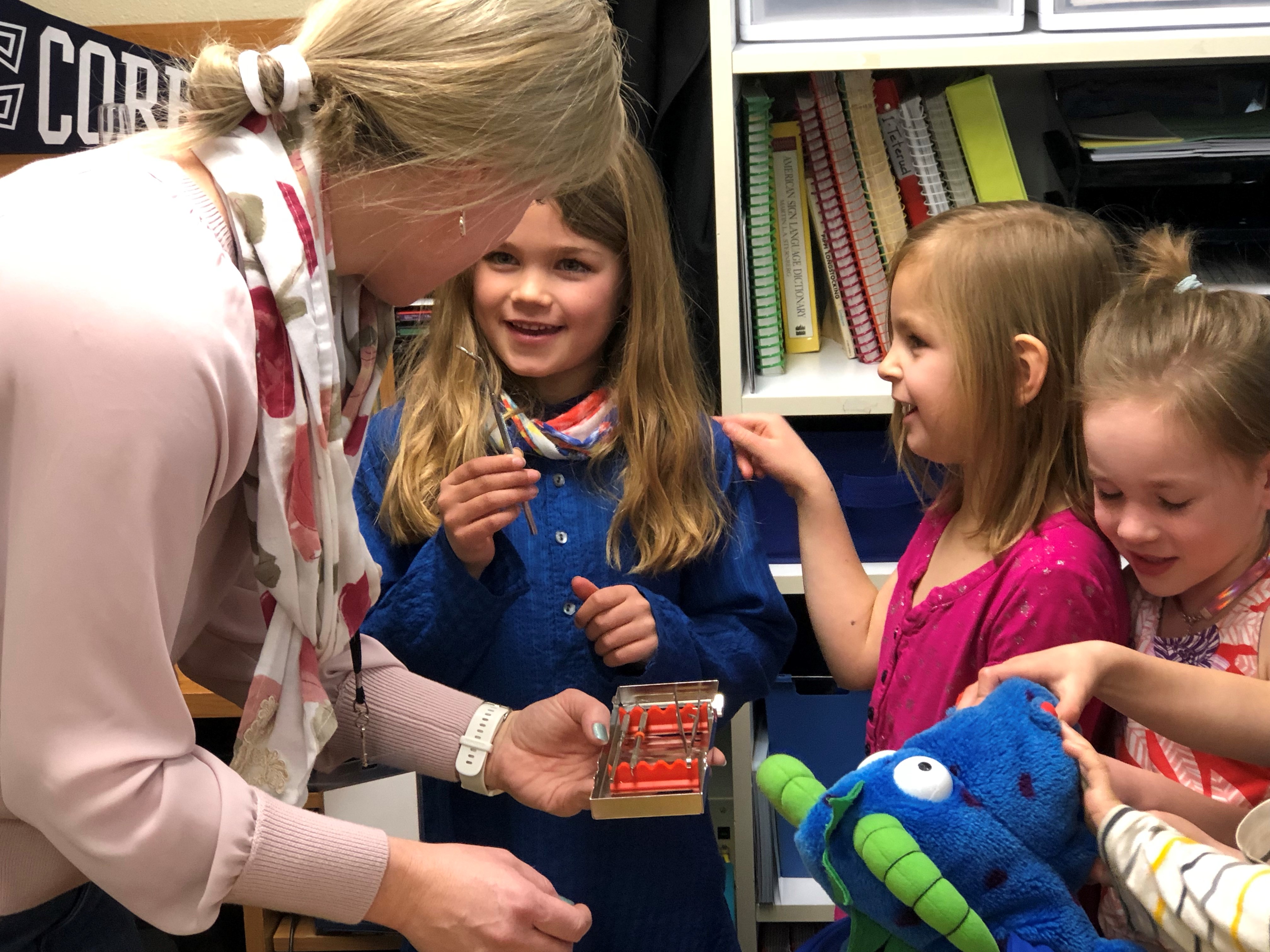
Dr. Calie Kloke: From Public Health to Integrated Patient Care
Dr. Calie Kloke first came to Oregon from South Africa as a college exchange student while majoring in pre-med. After getting to know a local dentist who performed her own root canal, the dentist asked if she had ever considered dentistry and suggested she shadow him in his office for a day. That experience solidified her interest in dentistry and after she graduated from Southern Oregon University, Dr. Kloke went on to complete her dental training at OHSU.
Like many young dentists, Dr. Kloke faced significant dental school debt, and so decided to return to Medford to work in public health at La Clinica Del Valle as a National Health Service Corps scholar to help pay back some of her loans. While Dr. Kloke enjoyed the opportunity to give back to the community she has come to call home, she saw first-hand the challenges of working public health.
"Because the need is so great, you tend to be limited in how much dentistry you can do in one visit," said Dr. Kloke. "You want to see more people to get more done, but you often aren't able to complete treatment. It was very rewarding though, to see how grateful our patients were that they had an option to get care."
She also saw firsthand how the lack of dentists in what could be considered a less urban area of the state can lead to a lack of access to care. While she has enjoyed getting to know her patients and her community on a more intimate and fulfilling level than she could have in a big city, working in Medford has also exposed her to the challenges facing patients who need dental care in some of the smaller Southern Oregon towns, many of whom drive for hours to get to Medford to see a dentist.
Dr. Kloke has since joined East Main Dental Center, a private practice in Medford that provides different services to Southern Oregon patients, such as cosmetic dentistry, orthodontics and implant restoration.
"It's a fun, rewarding job," said Dr. Kloke. "Medford is also a different kind of market for dentistry and there's a lot of camaraderie in the valley between dentists."
Dr. Kloke gives back to her community by hosting school programs to educate kids about proper dental hygiene. These programs are targeted toward preschoolers and kindergartners and use games and other fun tools to teach proper brushing techniques, among other oral health skills.
"The nice thing about being in private practice is that it allows you to be able to give back to your community in these ways," said Dr. Kloke. "We're able to take some of our dental hygienists with us to local schools to teach the kids the value of oral hygiene."
Dr. Kloke is also excited about the future of dentistry, especially as it relates to more integrated medical and dental patient care. She is particularly interested in the role dentists can play in administering things like the HPV vaccine, performing cancer screenings and identifying signs of sleep apnea.
"I love the HPV vaccine work that we're doing in dentistry and that we talk to our patients about that," said Dr. Kloke. "It's very valuable and it's very important that dentists are not afraid to speak to their patients about it. I feel very comfortable talking to parents and patients about it more, especially since we're seeing that oral cancers due to HPV are on the rise."
While Dr. Kloke has enjoyed all aspects of dentistry she has had the opportunity to work in throughout her career, she is especially excited for the future of coordinated patient care.
"I hope in the future, there is more medical-dental fluidity or working together," said Dr. Kloke. "Dental health is a whole health issue. I look forward to seeing how the future of dentistry changes and goes into more of the whole health model."
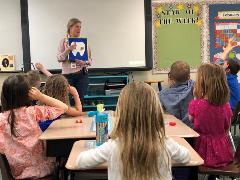
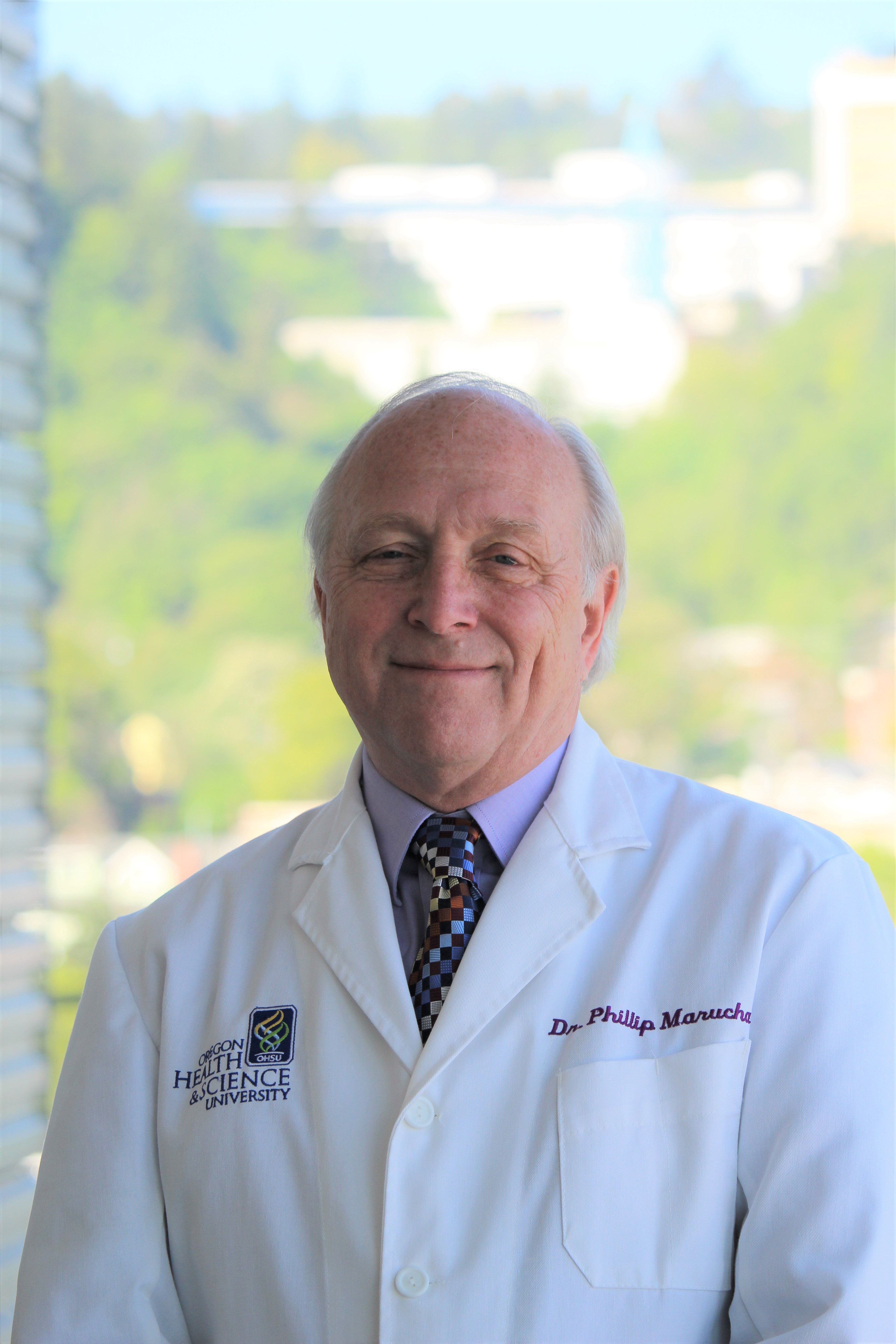
Dr. Phillip Marucha(former OHSU Dean): Equipping the Next Generation of Dentists
How can I move dentistry forward? How can I help the next generation of dentists?
These are the questions the dean of the Oregon Health and Science University School of Dentistry asked himself when he decided to focus on dental education.
Adding to his decades-long research and dental career, Phillip Marucha, D.M.D., Ph.D., has been serving students at OHSU for more than six years. During this time, he has collaborated with the Oregon Dental Association, OHSU alumni and more to ensure new graduates are equipped with the clinical skills and thinking needed to provide high quality oral health care across the nation.
"At the School of Dentistry, we are not training a dentist to just practice tomorrow, we are preparing a dentist for a career of 30, 40 or 50 years," Marucha said. "We are 100% certain that our graduates have the clinical skills needed to practice, the real test is whether they have the judgment to make procedural decisions."
As part of this training, the School of Dentistry uses a four-pronged competency model, including daily assessments, self-assessments, clinical skills assessments, and independent work study. Between all these assessments, students collect anywhere from 4,000 to 6,000 total hours of dental education before entering the workforce, Marucha says.
In addition to nearly 42 independent clinical skills assessments, students are also expected to provide self-assessments to better understand ways they can improve their practice and learn about the dental decision-making process.
"Through self-assessments they will continually refine the quality of their work. When they leave, they are already qualified to practice clinically, but our students can continue to become better and better dentists over decades of practice," Marucha said.
Continual improvement and flexibility are fundamental parts of working in dentistry with constantly changing technologies and circumstances. In the case of COVID-19, tele-dentistry has become an integral part of the dental experience and ensuring graduates are able to assess, adapt and overcome is crucial, Marucha says.
"We can train every student to do procedures, that's the easy part, teaching students to have good judgment, now that's the hard part," says Marucha. "Seeing how our students change and improve during this COVID crisis has been a great reminder of the high-quality practitioners entering the dental community."
The 2020 graduating class at the School of Dentistry has either completed or scheduled their clinical examinations required to practice; however, current students have had to catch up on missed opportunities in light of the recent pandemic while graduates begin looking for work. Marucha sees a bright future ahead.
"Our students are all really eager to get back into the swing of things. Briefly limiting educational experiences in light of COVID was tough, but our students and graduates" ability to overcome adversity while maintaining that high standard of oral care never ceases to amaze me."
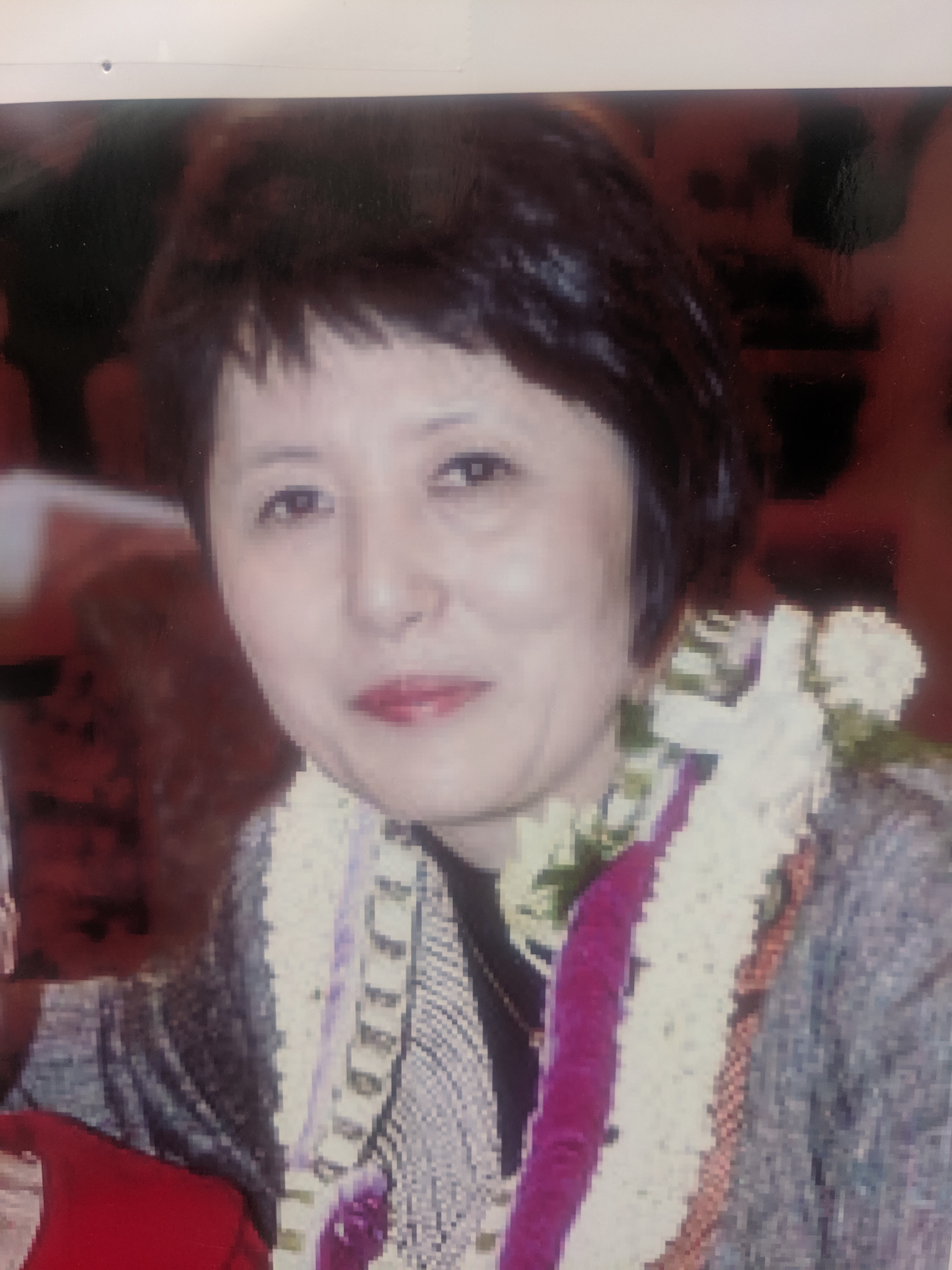
Dr. Connie Masuoka: Dentist, Humanitarian, Award Winner
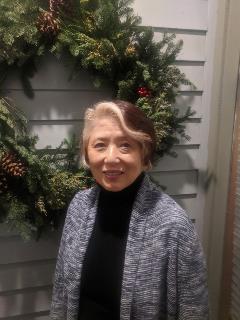 The Oregon Dental Association prides itself in the work our members do for both individual patients and the community. Shining bright as an example for the type of commitment, dedication and compassion the ODA strives for is 2019 Tom Tucker Humanitarian Award Winner and longtime ODA member Dr. Connie Masuoka.
The Oregon Dental Association prides itself in the work our members do for both individual patients and the community. Shining bright as an example for the type of commitment, dedication and compassion the ODA strives for is 2019 Tom Tucker Humanitarian Award Winner and longtime ODA member Dr. Connie Masuoka.
"I'm kind of amazed, they're so kind. I really don't do anything more than anybody else does," Dr. Masuoka said. "People just step up, you know; I think that's sort of just what dentists do in general."
Dr. Masuoka is humble when it comes to the various achievements that she has garnered during her 31-year dental career. However, her volunteer work for the Give Kids a Smile program, and leadership with Unite People — the youth portion of the Japanese American Citizens League — situates her as a humanitarian both in the dental chair and in the Oregon community.
As one of the founding members of Multnomah Dental Society's Give Kids a Smile program, Dr. Masuoka has been providing charitable care for decades. The Give Kids a Smile program is a nationwide initiative created by the American Dental Association that aims to mobilize dentists to provide free oral health care to low-income children during the month of February. Care and education are provided to students at annual health fairs.
In addition to her volunteer work, Dr. Masuoka is an integral part of the ODA community, following in the footsteps of her father, who was also a dentist and ODA member. Dr. Masuoka is on the board of Oregon Health & Science University Dental School Alumni Association as well as the Multnomah Dental Society.
"It's like having family," Dr. Masuoka said. "Developing that connection with people is what keeps you going as a human being. You can't just live in a bubble, and to do that you have to participate."
Dr. Masuoka's longtime commitment to serving her community and interacting with patients has earned her the 2019 Tom Tucker Humanitarian Award. The award, which was created in 2017, is the highest humanitarian and service award for dentists in Oregon and honors the legacy of ODA member and dedicated practitioner Tom Tucker.
The Tom Tucker Award isn't the first time Dr. Masuoka has been recognized for her commitment to the community. In early 2019 she also received the 20th annual Gladys McCoy Award, the most prestigious volunteer award in Oregon, for her generosity, mentorship and advocacy for civil rights and minorities in Multnomah County. But Dr. Masuoka says this sort of willingness to serve is not just her, it's something that all dentists have in common.
"I just kind of go where the opportunity takes me. If someone says, ‘hey we need help,' if I can make it, I help," Dr. Masuoka said. "There are so many people who work so much harder in front of me. It's just what dentists do."
Born in the Mt. Tabor neighborhood, Dr. Masuoka has been strengthening her community for decades, and after taking over her family practice in downtown Portland, Dr. Masuoka saw the power of dental care right before her eyes. Dentistry's ability to make an impact is what she says inspires her to continue the work she does today.
"I practice because I like to think that I'm making a difference," Dr. Masuoka said. "When patients are happy with themselves, it gives them confidence to eat something or talk without putting their hand over their face, those are the things that make you say, 'now that was a good day.'"
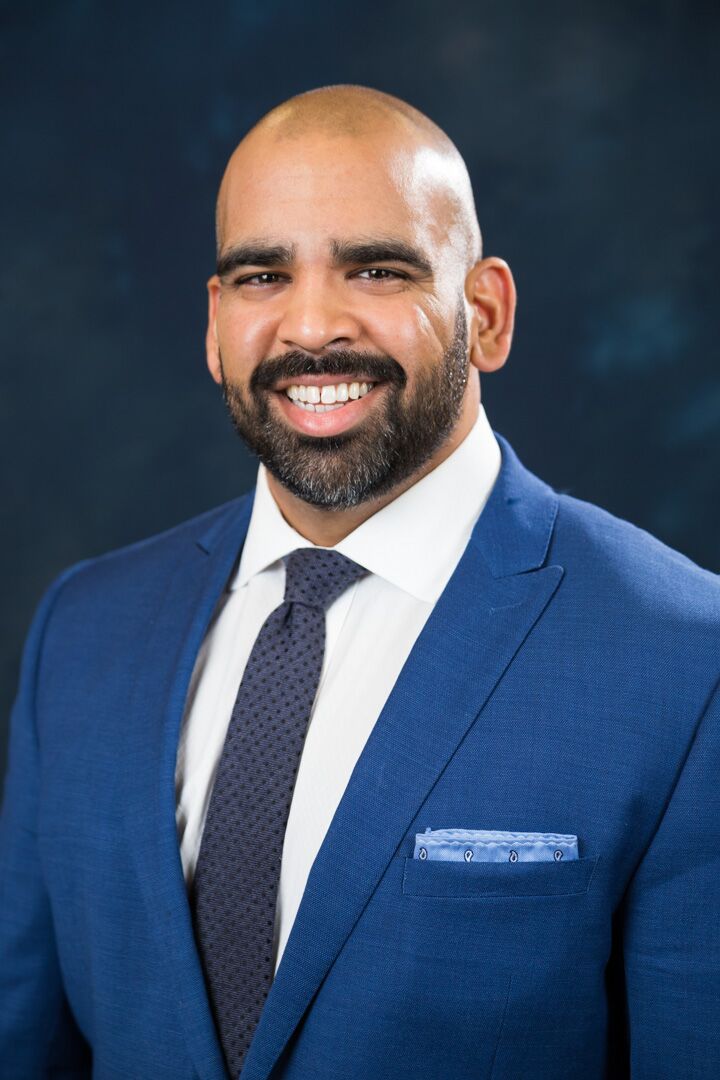
Dr. Ashish Patel: Inspiring the Next Generation of Oral Surgeons
The dental landscape in Oregon is changing, more dentists are looking to an integrated model of care and innovative dental technologies to provide solutions to complex cranio-facial issues, and at the forefront of this new dental landscape is Oral and Maxillofacial Surgeon, Dr. Ashish Patel.
Not only is Dr. Patel an expert in head and neck oncology and facial reconstruction, he also practices the full scope of oral and maxillofacial surgery including wisdom teeth removal, implant dentistry, obstructive sleep apnea surgery and facial trauma surgery.
This experience has brought him from mentee to mentor within the Head and Neck Surgical Associates Oncology and Microvascular Reconstructive Surgery fellowship, where he trains young oral surgeons in the very same fellowship program that he attended seven years ago.
"One of the most satisfying parts about my job, besides the day-to-day patient care, is the ability every day to make an impact on oral surgery residents and fellows and give them the tools and experiences to hone their skills so that they can be future leaders in dentistry," Dr. Patel said.
Dr. Patel knew he wanted to go into dentistry after interning at his aunt's dental clinic in high school. While helping at his family clinic, Dr. Patel saw the profound impacts oral health care can have on patients and has been committed to the patient-provider relationship ever since.
Today, Dr. Patel gets to inspire that same passion in the next generation of dentists by performing live surgeries for students, residents, and fellows on a regular basis. Working with students forces Dr. Patel to think critically about his own practices and stay on top of new dental technology and programs that he says are making dentistry more successful and less invasive than ever before. In fact, Dr. Patel has published extensively on the use of computer aided surgery and patient specific solutions in maxillofacial surgery. He was the first surgeon on the West Coast to perform the Jaw in a Day procedure – a fully digital and computer planned replaced of jawbone and teeth in a single operation.
Through his work with the ODA, Dr. Patel is also able to interact with exciting new dental programs that aim to increase access to care for rural populations. With the expertise and experience of dentists like Dr. Patel, the ODA continues to implement successful pilot projects that increase access to care for all Oregonians.
"I think the only way to address this problem is with a multi-pronged approach. I don't know that there's one perfect solution, but rather a variety of solutions to meet the needs of various populations that are at risk of not having access to care," Dr. Patel said. "The ODA has been instrumental in providing state-based programs."
Having experience with new oral surgeons, technology and programs also positions Dr. Patel as an informative and influential voice for the future of dentistry. As a result, Dr. Patel has spoken at the annual Oregon Dental Conference for the past several years, a place where he says the collaborative nature of dentistry to solve problems shines.
"The ODA's relationships with the Oregon Dental Board and state legislature position us, a group of dentists, to advocate for all of our patients in a broad forum," Dr. Patel said. "In some ways, the ODA is a ‘think tank' of individuals using their knowledge and personal experiences to collaborate with others to help deliver meaningful dental care."
By working with the ODA, Dr. Patel will continue delivering that meaningful care, shaping the future of dentistry and changing the lives of patients, a reward that he says makes all his hard work worth it.
"Often times patients don't have to say it, you can see it on their face that their life is changed for the better, and you know that you helped that person get to that point and there is nothing more satisfying than that," Dr. Patel said. "I can't really put it into words. It's the reason I wake up every day and continue to do what I do."
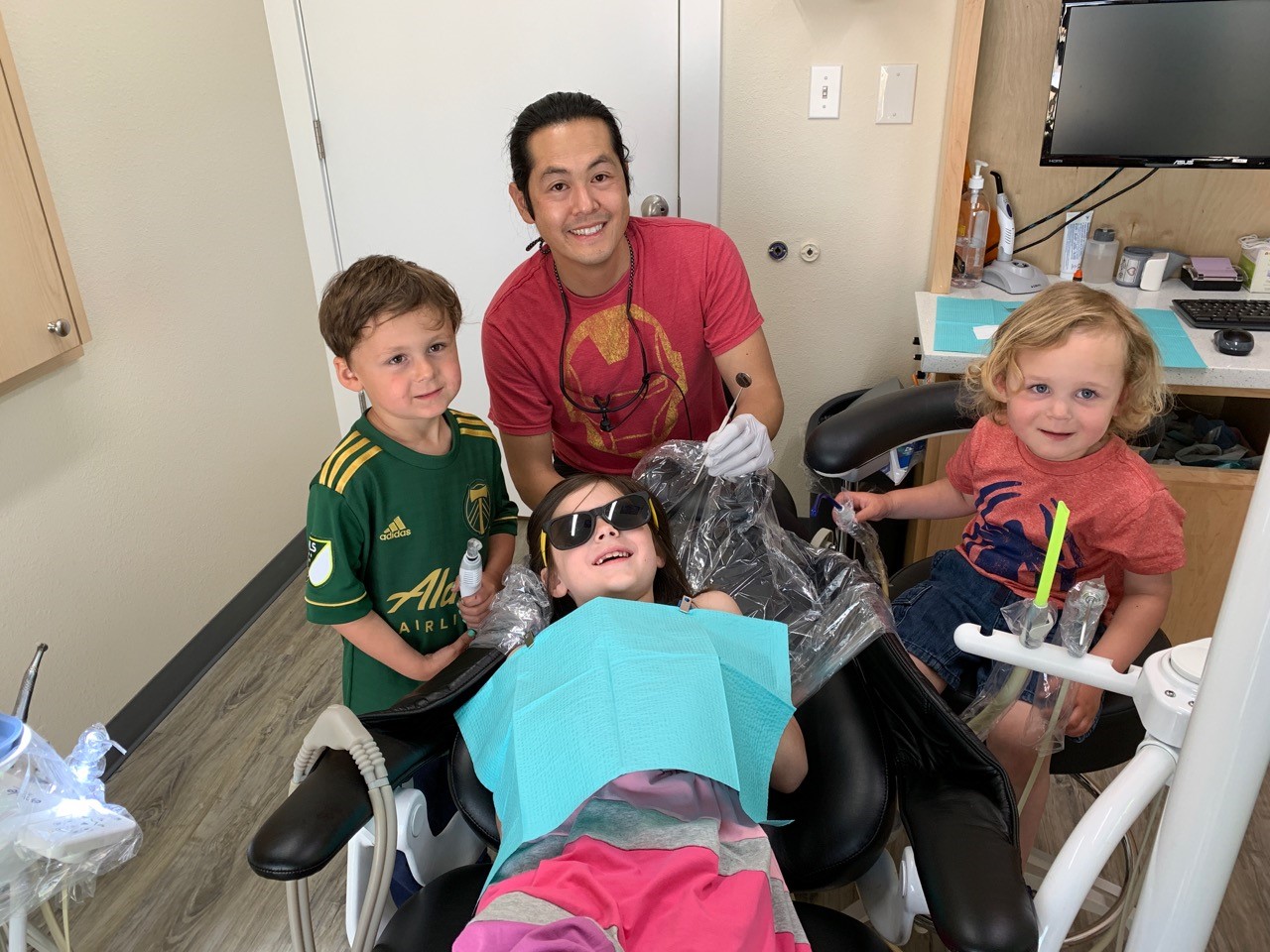
Dr. Hai Pham: Giving Back Through Pediatric Dentistry
Today, Dr. Hai Pham is a pediatric dentist at his private practice in Portland and Hillsboro and the Pediatric Section Chair at Randall Children's Hospital. He also serves as a board member for the Oregon Board of Dentistry and recently the Governor has appointed him to her Children's Cabinet. But his path to Oregon was almost as unique as his path to dentistry.
Born in a Malaysian refugee camp to Vietnamese parents, Dr. Pham immigrated to the United States with his parents in 1980 after being sponsored by a church in Corvallis. He was inspired at a young age by the dentist who provided care for his family.
"He always made me feel special and made a big difference in my life," said Dr. Pham. "As I got older and joined the dental profession, I realized he had been doing all of this pro bono work for my family because we couldn't afford dental care."
Member Highlights- Pham 2With a desire to pay it forward, Dr. Pham earned his dental degree from OHSU and applied for a pediatric residency at OHSU/Doernbecher Children's Hospital. At age 27 and just 3 months before starting his residency program, Dr. Pham was diagnosed with Chronic Myeloid Leukemia in March 2007.
"That's when my battle truly began, because I couldn't afford my copay of $15,000 per month for my one medication. I wasn't getting the treatment I needed, and I was wasting away, so I had accepted my fate and was ready to meet my maker," said Dr. Pham.
The director of the Knight Cancer Institute developed a new revolutionary target therapy drug that treated his cancer and gave him a second chance at life. "He was able find a way to get my medication for free and saved my life. That's part of what led me to how I practice now – realizing how tough it is for individuals who don't have access to care. I do a lot of pro bono work for that reason. It's my way of giving back every day."
While battling cancer, Dr. Pham started his pediatric dental residency in 2007 and later opened his own pediatric private practice, Hi5Dental. He says he enjoys working in pediatric dentistry because you can shape good dental health at a younger age and guide patients and their parents to have better oral health habits and better health overall.
"Pediatric dentistry is unique because you can make a big difference in a child's life. The positive dental experiences they have today will last a lifetime. This will also be passed down to future generations," said Dr. Pham. "It's also great to see that after we're done working on their teeth, they're excited to come back and see us. It's important that they're not scared of the dentist, so they keep wanting to come back."
Dr. Pham is also committed to using his skills and the opportunities he was given to give back to those in need of care. He serves on the Board of Directors for the Dental Foundation of Oregon and as Oregon's Delegate for the American Dental Association and has volunteered with the ODA's Mission of Mercy and Tooth Taxi. He also has the privilege of working with the Knight Cancer Institute to help promote cancer awareness.
Dr. Pham has also participated in mission trips to Vietnam with Give Hope – Give a Hand, which helps provide prosthetics to those who have lost hands to landmines, accidents or birth defects at no cost. Dr. Pham acknowledges that he could have been one of the Vietnamese patients in need of a prosthetic, had his parents not left the country as boat people when his mother was pregnant with him. That experience, in addition to his experience as a cancer survivor, has inspired him to "pay it forward."
"It's important to me to be able to give back," said Dr. Pham. "I want to ensure we're getting care to the kids who need it.
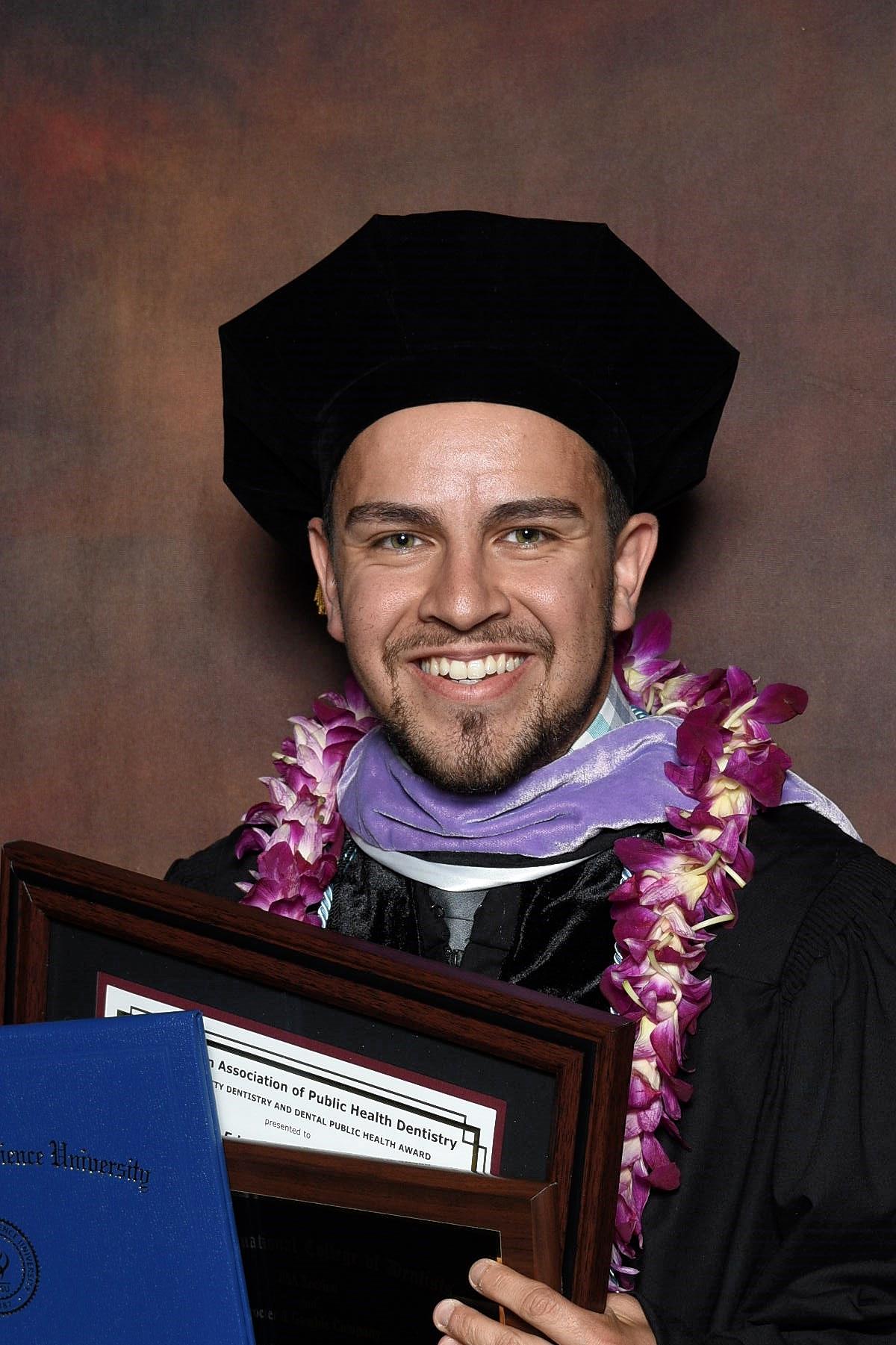
Dr. Eddie Ramirez: Fighting for Access to Care, and the Opportunity to Provide It
From the time Dr. Eddie Ramirez was 8 years old, he knew he wanted to be a dentist.
On his last trip to his birthplace of Mexico, his aunt had just finished her dental training. Seeing her work with the communities there inspired him to pursue the same field, first through a charter program in high school, where he earned his dental assistant certification, and later at Oregon Health & Science University's School of Dentistry.
A co-chair of the Oregon Dental Association's New Dentist Council, Dr. Ramirez works at the Virginia Garcia Dental Clinic through a scholarship he earned from the Scholars for a Healthy Oregon Initiative. With the scholarship, Dr. Ramirez has committed to five years of public health service, offering dental care to communities who may otherwise not have access to oral health care.
Once Dr. Ramirez looked into Virginia Garcia, it was an easy decision to choose to work there. The clinic's work and mission lined up well with his values and the vision he's connected to through the Oregon Dental Association.
"Their philosophy connected to my life story," Dr. Ramirez said. "I felt like this is where I needed to be. ... I've always had a passion for public health and serving underserved communities."
An immigrant himself, Dr. Ramirez is grateful for ODA's support of his practice at every step along the way.
"I am treating the Hispanic community here at Virginia Garcia – I see a lot of uninsured patients," Dr. Ramirez said. "This is the community I come from, and this is what makes my story unique."
As ODA's New Dentist Council co-chair, Dr. Ramirez connects with current dental students, works on issues affecting recent graduates such as the cost of going to dental school and coordinates a network supporting dentists who have been working for 10 years or less.
Before serving on the ODA committee, Dr. Ramirez was the student president of OHSU's chapter of the American Student Dental Association.
"The biggest thing I've been brought into through the ODA is merging the gap between the new generation and the old generation," Dr. Ramirez said.
With many new grads going into either public health or corporate dentistry, there is a shift in mindsets and a shift in demographics, with more women and more people who are minorities joining dentistry – something both Dr. Ramirez and the ODA are excited to see.
"I want to keep seeing the change in demographics in dentistry and the change in equity," Dr. Ramirez said. "That's where we're headed, and I'd like to see the dental schools have more equity in gender and diversity."
Even outside of his 9-5 work, Dr. Ramirez is committed to helping people gain access to high-quality oral health care through the Give Kids a Smile program, which offers free dental services to children. He volunteers for the program annually at Multnomah County Children's Health Fair.
"I have been participating since my junior year in high school through undergrad and dental school," Dr. Ramirez said, noting he's pleased to now be volunteering as a dentist.
In his daily work at Virginia Garcia, Dr. Ramirez performs a lot of extractions and serves many patients who need crowns but can't afford them.
"I tell dental students who come here on their rotations that it's really nontraditional dentistry," Dr. Ramirez said. "I love it. It's what I'm used to doing."
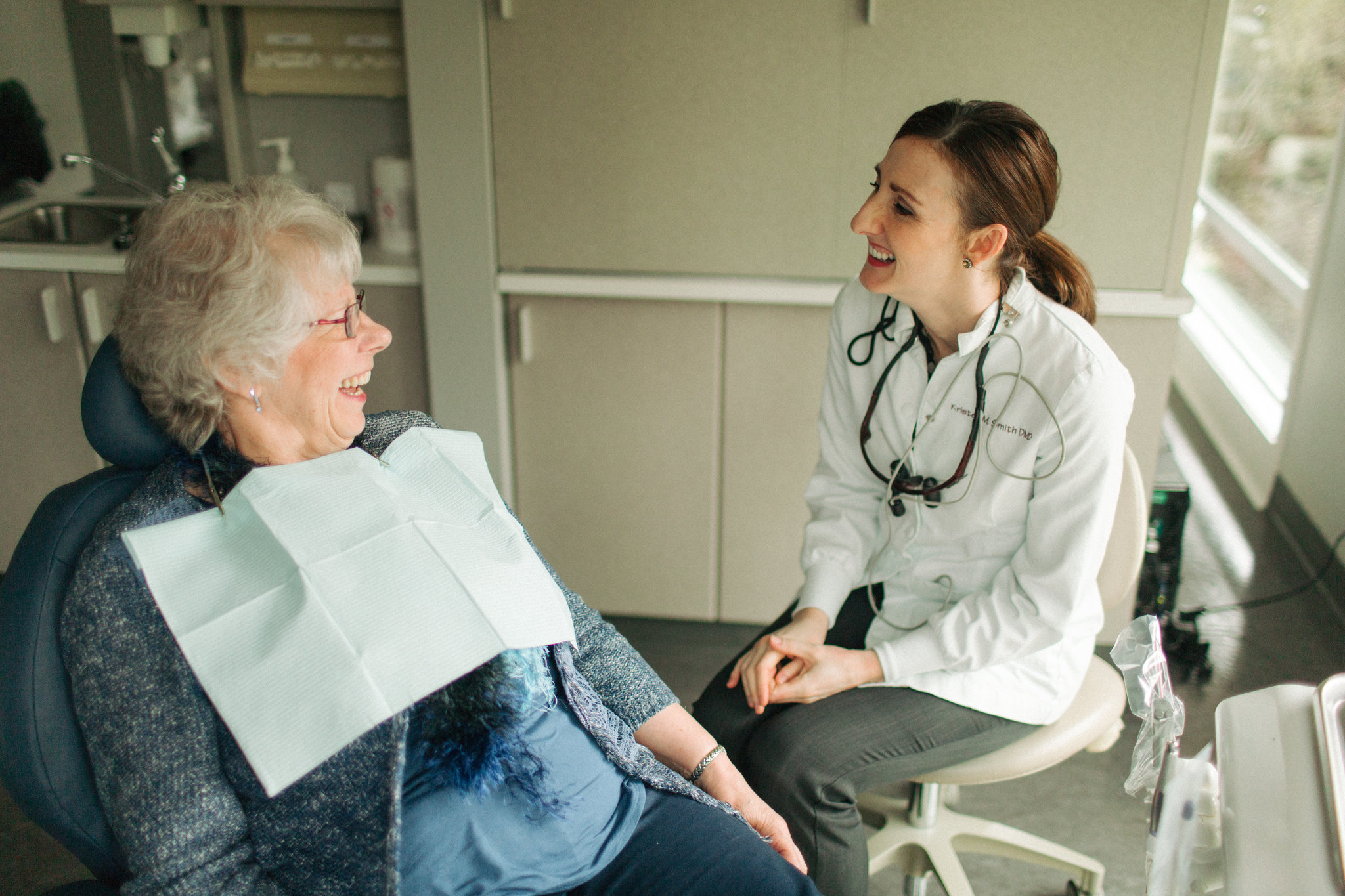
Dr. Tony Ramos and Dr. Kristen Smith: Engaging Communities Through Active Events
When Dr. Tony Ramos graduated from OHSU's dental school, the Oregon Coast native and his wife were looking for a small town where they could make a maximum impact. They settled down in Prineville, where Dr. Ramos joined Ochoco Dental, a general dental practice.
Dr. Ramos soon saw an opportunity for an event that would bring the community together, help get his patients involved in something active and give back to charitable dental care. In 2013, Dr. Ramos helped organize Prineville's first Paddy Pint Run, a St. Patrick's Day fun run that benefits the Dental Foundation of Oregon's Tooth Taxi, as well as the Crook County Foundation.
"We wanted to create an event that showcases our pride in the community and provides a way for people to connect with the community while doing something that's active and fun," said Dr. Ramos. "We bring businesses and organizations together that are all trying to help our community in one way or another."
The proceeds from the event benefit the Tooth Taxi and the Crook County Foundation, which supports Crook County on the Move, a local nonprofit focused on promoting movement and physical activity in the community. The run also seeks to get kids involved and on the move, incentivizing young runners to participate by donating $5 of their $20 entry fee back to their school.
"My goal was to provide an example of something a dentist can do to positively impact their community," said Dr. Ramos. "We should be ambassadors of more than just dental health in our own communities."
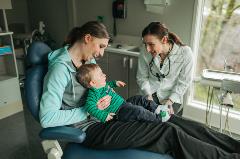 Dr. Ramos' dental school classmate, Dr. Kristen Smith, saw the success of his event in Prineville, and set out to match his community's enthusiasm with a similar event in her hometown: the Salem Paddy Pint.
Dr. Ramos' dental school classmate, Dr. Kristen Smith, saw the success of his event in Prineville, and set out to match his community's enthusiasm with a similar event in her hometown: the Salem Paddy Pint.
"We felt like this provided an opportunity to reach out and do more in our community," said Dr. Smith. "We wanted to help the Tooth Taxi and get our community together by doing something active."
Having just completed its third year, the Salem Paddy Pint had a record 618 participants in 2019. All proceeds from the race will go to the Dental Foundation of Oregon (DFO).
"We're not necessarily able to serve everyone in our community, but the race helps us meet our goal of helping other kids in our community we otherwise wouldn't be able to," said Kourtney, Dr. Smith's office manager. "It has also allowed us to reach out to more than just the dental community. We've been working with other businesses in the area to get the word out."
Dr. Smith also works with DFO's school programs that serve local kids. She believes this work is important because it makes you a little more aware that sometimes, kids aren't able to get dental care simply because of transportation challenges or the financial ability of their parents to pay for dental services.
"Our Salem Paddy Pint gives us another way to help kids in all parts of Oregon by increasing access to dental care through the DFO and the Tooth Taxi," said Dr. Smith. "I hope that events like this inspire more dentists to get involved in bettering our communities throughout Oregon."
Dr. Gregory Williams, Dr. Scott Dyer and Dr. Greg Atack: Humanitarian Trips Allow Dentists to Give Back to Global Communities
A few years after graduating from dental school, Dr. Gregory Williams decided to participate in a dental humanitarian trip abroad. The following year, he invited his dental school friend Dr. Scott Dyer to join a similar humanitarian trip to provide dental services to underserved communities. What started as a single trip to Peru soon turned into Dr. Williams and Dr. Dyer forming their own nonprofit in 2007, Wide Open Humanitarian.
Through Wide Open Humanitarian, Dr. Williams and Dr. Dyer facilitate dental humanitarian trips to some of the most disadvantaged communities across the globe, instructing local dentists in remote areas and helping pave the way for future organizations to set up ongoing dental clinics.
About once a year, Dr. Williams, Dr. Dyer and Dr. Greg Atack – a fellow dentist and friend of Dr. Williams and Dr. Dyer who has been working with Wide Open Humanitarian for over 10 years – organize and participate in an international humanitarian trip where they help provide dental care to the poorest of the poor. Many times, they visit communities where their patients are living on less than $2 per day and have never seen a dentist before. Their trips have taken them to countries in the South Pacific, Central America, South America and more.
"What's really neat about our trips is we're going to places where a dentist has never been. The people we work with are so appreciative," said Dr. Atack. "We may start the day's work in a tiny community with 20 people around and by the time we are set up there might be 80 or so people who have come from miles around because they've heard we're here."
Wide Open Humanitarian usually takes 6-8 dentists, 4-6 dental students and 4-8 dental assistants with them on each trip. With that support, they've been able to provide care for close to 15,000 patients since they formed the organization in 2007.
But Dr. Williams, Dr. Dyer and Dr. Atack want to make sure they're not just providing a few days-worth of help for the communities they're serving. They usually partner with a local organization to get the message out about their work and to continue their work down the road. They also generally try to partner with a local dentist who they can train in some of the newest techniques.
In addition to providing education and training for local dentists, Wide Open Humanitarian brings supplies for local dentists. Since 2007, they estimate they've delivered dental materials to 30,000-45,000 patients in remote areas. On a trip to Peru, they donated an extra headlamp to a local dentist who said it completely changed the way she practiced dentistry for the rest of her career. Simply by adding a headlamp, she was able to see 2-3 additional patients on each of her trips to the local villages.
Dr. Williams, Dr. Dyer and Dr. Atack try to lay out a blueprint for others who are interested in serving these communities, whether that is additional humanitarian dental trips or a more permanent clinic. For example, they worked with a community in India at a school that opened a permanent dental clinic that was dedicated by the Dalai Lama in 2012. Dentists from all over the world – including many from Oregon – visit the school's clinic and donate their time to serve the local community.
"Dentists are very lucky because we work in a great profession that is needed throughout the city, the state, the nation and the world," said Dr. Dyer. "All my other friends say that if they had a skill they could take to help out another part of the world, they would, but dentists have a unique skillset we can share. We always recommend to everyone that they take advantage of whatever possibilities they have to help out in their own way."
For Dr. Williams, the work the organization does is important for many reasons, but in particular because, "the vast majority of people in the world live their whole lives without having regular dental care and we have a particular skillset that can help them. For that reason alone, it's important to take the skills we have to help humanity wherever they are. I've also had the opportunity to take members of my family with me on many of our trips, which has given us a great opportunity to connect and be grateful for what we have. Sometimes it's easy for us to get caught up in the first world problems that we deal with. For me, it's been a great way to keep me grounded and continue to see things that create joy and happiness in my life."
Dr. Williams has also had the opportunity to bring members of his family on many of the trips and agrees that it's helped them appreciate how grateful they are for all they have. "It's a wonderful reminder of what we've been blessed with," he said.
For Dr. Dyer, these trips are a way for him to use his skills to give back now, without waiting until it's convenient or the "right time."
"Everyone says, 'someday I'll do this when I retire' but we read an article that reminded us to do things when we're younger and can afford to do it and can physically do it. As we get older, it's a little more difficult to do. But we've discovered its part of the way we feel renewed coming back to our practices. Wherever you're at in life, unless you really cannot, now is the time to help – locally, internationally, wherever you can. Don't put it off," said Dr. Williams. "Everyone has something they can share. Share what you have. Make the world a better place."
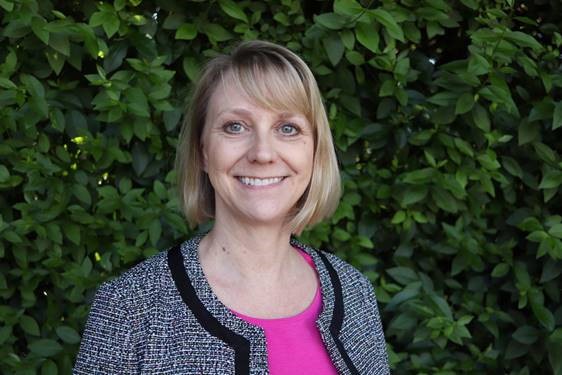
Dr. Kim Wright: Promoting Mental and Dental Wellness
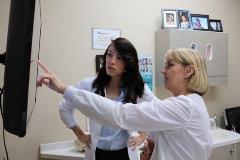 When Dr. Kim Wright found out a friend and colleague was struggling with mental health issues 12 years ago, she immediately tried to find him help.
When Dr. Kim Wright found out a friend and colleague was struggling with mental health issues 12 years ago, she immediately tried to find him help.
At the time, Dr. Wright, an ODA member with her own family practice in West Linn, found the resources offered by the ODA were focused on addiction and lacked other support for those who were struggling.
"When someone asks for help, you might only have one opportunity before that person is gone," Dr. Wright said.
So she didn't give up. Dr. Wright found that the American Dental Association could help connect her friend to broader mental health resources, including a full-time outpatient facility and intense counseling that helped him through the crisis.
"That's where my passion for mental wellness really developed," Dr. Wright said, adding she wants to help colleagues through the challenges they face earlier where possible.
Disappointed by the limited resources for mental health help for her colleagues in Oregon, Dr. Wright was determined to help make change happen. A member of the ODA's Wellness Committee, Dr. Wright was asked to champion the organization's new wellness initiative. This movement involves the ODA working collaboratively with other organizations including the Oregon Medical Association, Oregon Psychological Association and the Oregon Health & Science University wellness program.
"The idea is to create a safety net that's much larger than we've had in the past," Dr. Wright said.
She believes taking advantage of existing services and offerings is key. The goal is to make care options more accessible via resources on the ODA's website and the new role of ambassadors.
As part of the ODA's Wellness Initiative, Dr. Wright has helped recruit 30 ambassadors from around the state who can help colleagues with a range of issues they may have faced themselves, from burnout, to addiction, to the stress of a lawsuit or HIPAA violation that may be beyond a doctor's control. One essential aspect of pursuing wellness for doctors and their staff is opening up the conversation about mental health. Dr. Wright encourages doctors, staff and even patients to check in on each other.
As a staff person, "If you think your doctor is struggling or if you're worried about your doctor, let them know that this service is available or reach out to us and we can find someone who can have a conversation with them," Dr. Wright said.
Ensuring access to care isn't just something Dr. Wright sees as valuable in the mental health arena. She views it as the best approach to overall wellness, which is why she aims to practice integrated health in her own office every day.
Originally from Alaska, Dr. Wright attended Bellevue Community College, then the University of Oregon and finally OHSU's dental school, graduating with honors in 1989. But Dr. Wright is a lifelong learner. She logs more than 100 hours of continuing education annually.
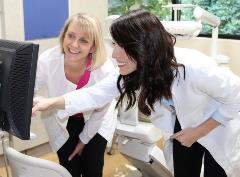 "My mantra is build a skill a year," Dr. Wright said. "After 30 years, you have a lot of skills you can provide your patients."
"My mantra is build a skill a year," Dr. Wright said. "After 30 years, you have a lot of skills you can provide your patients."
The skills Dr. Wright has acquired over the years allow her to offer patients more insight into how they'd like to handle an issue, so she doesn't automatically have to send them to a specialist.
"Whether you're doing the work or not it helps you help your patients understand their options," Dr. Wright said.
Her enthusiasm for lifelong learning has pushed Dr. Wright to explore such areas as oral facial pain and TMD, or temporomandibular disorders, which are common but still little understood. Like her approach to mental health issues, Dr. Wright wants to address conditions like TMD head-on instead of ignoring them or hoping they'll go away.
While ODA's Wellness Initiative is still in the development phase of making more resources available online, Dr. Wright is excited to see offerings that can make a vital impact.

